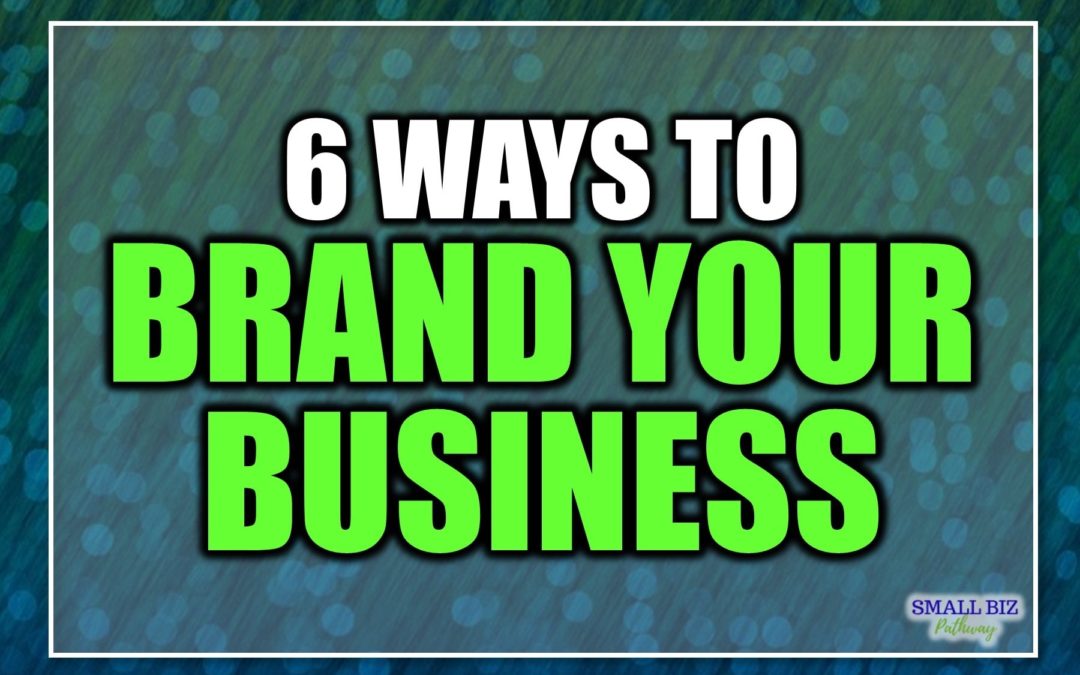6 WAYS TO BRAND YOUR BUSINESS
Branding. What a word. I’m sure you hear it a lot. And, you’ve probably noticed that people place great importance on it. But you may wonder, “What is branding?” Branding is more than just your business name. It’s more than just your logo. Branding is a way customers identify your business. Your branding should be reflected in everything — your uniforms, your business cards, your social media pages, your website, your logo — everything!
When branding your business, consider how you want people to think about and feel about your business. There are six ways to brand your business effectively:
1. Define your brand
To define your brand, determine the following:
- what things are important to your customers;
- what benefits you offer to your customers;
- what types of customers you want to attract; and
- what qualities you want your customers to associate with your business.
After considering these things, write a Mission Statement which includes the Who, What, Where and Why of what you do. For example, it may include what you do, why you do it, how you do it, who you do it for, and where you do it. Basically, it’s a summary of the nuts and bolts of your business.
The Mission Statement for my business, Scrapper’s Edge is: “To provide our customers with the BEST products, prices, and service for their paper-related needs.”
2. Develop a tagline
A tagline is a short statement that explains your business. It should be memorable and should help define your business. Often your business name may not be enough to convey what your business offers. The tagline should help define what your business offers.
The Tagline for my business is: “The Copy Stop and Scrapbook Shop.” If I didn’t have this tagline, people may think we are just a scrapbook supply store. Or, they could think we deal in scrap metal. (We have received calls asking about prices for scrap metal!) The tagline helps define what my business offers.
3. Create a logo
Your logo is important. It is a visual representation of your company. It’s used to recognize and identify you. It should be memorable, simple, appropriate and, hopefully, timeless. Unless you’re a Graphic Designer, it’s best to hire a professional to create your logo. A professional will not only have the skills to create your logo but will also understand the legal ramifications of developing a logo. For example, you cannot use just any photo or graphic. You also cannot use slogans or taglines that other businesses use. Even certain fonts are not supposed to be used commercially for logos. A professional graphic designer will understand these things and will also consider your mission statement, your tagline, and your audience when developing your logo. A professional will also help you identify which colors, images, and fonts will help represent your business and evoke the feelings you want it to.
For more information on creating a logo, check out this article: 5 TOP LOGO DESIGN TIPS
4. Unify your branding across channels
It is important to integrate your brand in everything you do — your uniforms, your business cards, your social media, your emails. Both offline and online your branding should stay the same. Evaluate your messages and ensure you’re communicating in a unified manner. Some of the things to evaluate include:
- how you answer the phone
- your email signature/footer
- social media graphics, including your header photo
- business cards, brochures, and other printed materials
- advertisements
Everything should convey the same message no matter where people find your business or engage with your business. Remember to not only include your logo and tagline but to also use consistent fonts and colors.
5. Create templates
To save time and ensure your message is consistent, it helps to create templates. If you have employees or outsource design, it will become even more helpful to have templates. For example, if you post pictures on social media you may want your logo in the lower right corner or your website listed across the bottom of the graphic, you can set up a template so that a particular design element is always in the same location. Depending on the programs or apps you use, you can even set up filters so that images have a similar look.
6. Be consistent
In order for both your offline and online messages to be recognizable, it’s important that you are consistent. The style, the fonts, the colors, the message . . . everything matters. And, consistency will help ensure that your business is memorable and will help build the image you hope to convey. It’s never too late to ensure consistency. If you have updated your logo or tagline, for example, remember to update your message including social media headers, social media profile photos, advertisements, business cards, brochures, and email signatures.
Branding is one of the most important aspects of any business. Your brand is developed based on what your business does, what message you want to convey, and how you want people to perceive your business. Sure, your branding includes your logo and tagline but it is much more than that. Your branding should differentiate you from your competitors. It will pay off if you take the time to consider each of the 6 ways to brand your business listed in this article.
I hope this information is helpful. You may want to also read the following articles:
The following two tabs change content below.


Sondra Kirtley, MBA, is an entrepreneur who owns and operates a retail and service business in Eureka, California. Known for her helpful nature and small business expertise, Sondra founded SmallBizpathway.com to share tips and experiences with other small business owners.
Latest posts by Sondra Kirtley (see all)
- Small Business Survival during the Pandemic - February 28, 2021
- HOW TO INCREASE SALES WITH SUGGESTIVE SELLING - February 21, 2021
- “WOW” YOUR CUSTOMERS WITH THANK YOU CARDS - February 15, 2021





Well spoken! It’s surprising how this aspect of a business can really become low on the marketing totem pole for businesses. There was a business in Eureka that opened after the woman received a nice settlement in a divorce. She opted to name the business “The Best Revenge” to get back at her ex-husband. The business lasted less than six months. Oh yeah, what type of business was it? A delicatessen. WTF???
Interesting, Ross! After “location, location, location” considerations, the business name is another important consideration!
Great post! Very interesting to read. I would like to read some more updates from you. Thanks for Sharing.
Hello,
This blog is very nice and useful a blog info useful. Thank you for sharing this blog
This blog is very nice and useful a blog info useful. There is so much to learn through this blog. So thank you for sharing this blog